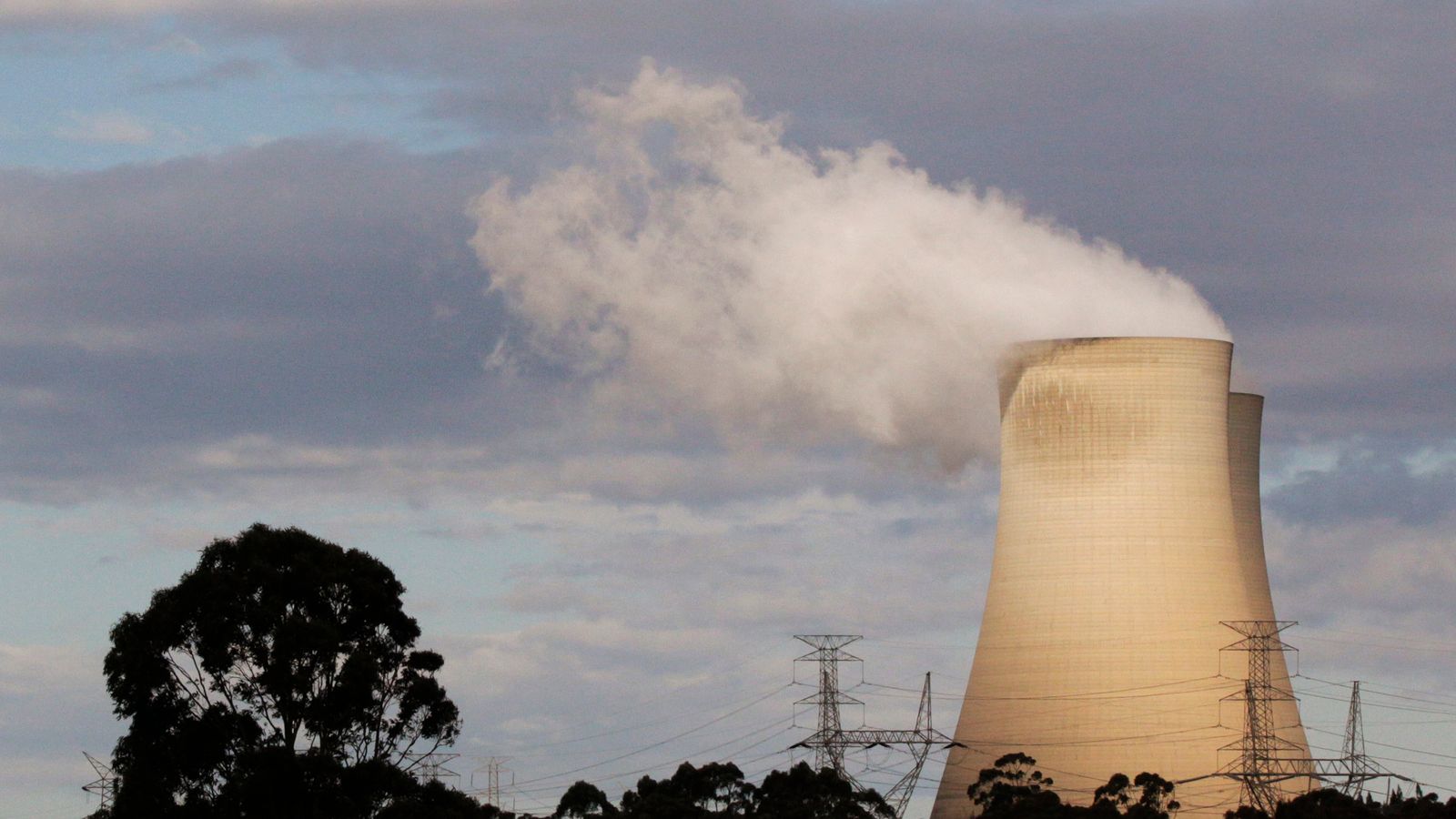This year Australia is trying to transform its climate credentials from laggard to environmental crusader.
From a reputation as an outlier that refused to sign any new pledges at the UN’s COP26 in Glasgow last year, Australia is now a signatory to the global agreement to reduce methane gas emissions by 30%.
Its new Labor government has also committed to shifting to renewable energy and cutting greenhouse gas emissions by 43% by 2030. Under the previous Liberal-National Coalition government it was 26%.
What a difference a year makes.
The Climate Council’s Nicki Hutley said: “At the last COP conference we had no pledges.
“We had a low target.
“We were doing nothing.”
Five lions escape Sydney’s Taronga Zoo forcing it to issue ‘code one’ alert and rush overnight guests to safety
US set to station nuclear capable B-52 bombers in northern Australia
Record $1bn of liquid meth found hidden inside coconut water cartons in Hong Kong
But Ms Hutley said that, since the election this year, Australia has “gone from an F to sort of a B”.
However, for flood survivors in the northern New South Wales city of Lismore, a ‘B’ does not cut it.
The towns and villages in this region are built on flood plain country. People are used to floods here.
So when the rain started in February and didn’t stop for days, no one expected the scale of this catastrophe.
A great deluge unlike anything they had seen before.
For many it was a narrow escape.
Read more:
Floods threaten thousands homes in Australia as rainfall forecast to be record-breaking
Record high coral on parts of Australia’s Great Barrier Reef
Sydney floods: Families need boats to leave home as deluge of floods hits city suburbs
Mark O’Toole, his son and an elderly neighbour waited for almost three days in a boat as the water raged around them.
When help finally came they scrambled onto the roof of O’Toole’s house and were winched up to a military helicopter.
“I’ll never forget when the helicopter came in, the down force was unbelievable,” he told Sky News.
“It lifted the roof right off the house like a massive big wave.
“Bits of tin flying everywhere.”
The house sits 24 metres above the river. Incredibly it was not high enough to save it from being smashed by a wall of water.
He lost everything.
“We’re living off a gas camping shower and a barbeque, with no flushing toilet. No fridge. It’s disgusting.”
Mr O’Toole showed us around the bare, stripped-down cavity of his home.
“We can’t sell our properties for anything, so we can’t move.
“We’re stuck.”
Another flood survivor, Adam Guise blames climate change for dumping disaster after disaster on this community.
“It’s been smashed by floods, it’s been smashed by bushfires and it will continue to suffer extreme weather unless we take action,” Mr Guise said from the balcony of his abandoned home.
“That means ending coal, keeping gas in the ground and not sending all our coal overseas to fuel other people’s climate catastrophes.”
The Intergovernmental Panel on Climate Change reports the world’s global warming is at 1.2C above pre-industrial levels. However, Australia has already surpassed that. It’s at an alarming 1.4C.
“Australia is one of the top 10 emitters per capita in the world, so we are digging up fossil fuels and exporting them at a rate of knots,” Ms Hutley warned.
When Lismore flooded, the city’s main bridge went under, brown murky water coursed through the streets and thousands of people became “flood refugees”.
Australia is no stranger to natural disasters, but these scenes were described as “apocalyptic”.
Read more:
Joe Biden apologises for the US pulling out of the Paris climate agreement
UK coastal dwellers not being warned of rising sea level risk and property prices skewed, says climate professor
People waded through chest-high water, carrying pets and bags in their arms.
Dozens of small boats, called ‘tinnies’, were commandeered by Lismore locals, forming a scrappy rescue force.
The survivors then became rescuers. People saved each other.
Mr O’Toole joined them.
After escaping from the flood, he took a boat out and spent days saving more than 20 neighbours.
The Northern Rivers hinterland had become a full-blown disaster zone.
Now while the world’s leaders dither and debate in Egypt on what action to take, the casualties of climate change live with the threat of more rain, more floods and an ever more uncertain future.
Mr O’Toole is losing hope.
Taking his tinnie for a spin down the river, he said the sound of rain brings dread.
He fears the next mega-flood is coming.
“I feel weird and anxious about it. The community is traumatised. Mental health has been forgotten.”
Watch the Daily Climate Show at 3.30pm Monday to Friday, and The Climate Show with Tom Heap on Saturday and Sunday at 3.30pm and 7.30pm.
All on Sky News, on the Sky News website and app, on YouTube and Twitter.
The show investigates how global warming is changing our landscape and highlights solutions to the crisis.








